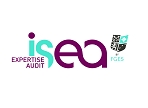Présentation
Students should be of upper-intermediate English level and be relatively proficient in the speaking, reading and writing of Business English.
Concepts of Microeconomics, including consumer theory, producer theory, market equilibrium, monopoly and monopolistic competition as well as concepts of Macroeconomics (including exchange rates and model of short run open economy). (Concepts will be reviewed in class)
This course aims at expanding the students’ knowledge and understanding of: economic tools, international trade theory and policy, exchange rates determination and exchange rates policy, foreign exchange market, balance of payments and international financial investment.
Upon completion of this course, students are expected to understand economic theory and its predictions. In addition to learning content, students shall also develop an ability to use these theories.
Chapters 2 to 6 will analyze why countries trade and how trade affects production, consumption, prices in each country. We will learn how to evaluate the gains or losses from trade. Chapters 8 to 11 will show how government policies can also affect trade and income distribution. Finally, chapters 16 to 20 will show how real exchange rates are important determinants of trade. The determinants of exchange rate are analyzed as well as arbitrages made by investors.
Introduction:
The Theory of International Trade:
The Basic Theory Using Demand and Supply Chapter 2
Comparative Advantage Chapter 3
Factor Availability and Factor Proportions Are Key Chapter 4
Who Gains and Who Loses from Trade? Chapter 5
Scale Economies, Imperfect Competition, and Trade Chapter 6
Trade Policy:
Analysis of a Tariff Chapter 8
Non-Tariff Barriers to Imports Chapter 9
Arguments For and Against Protection Chapter 10
Pushing Exports Chapter 11
Understanding Foreign Exchange:
Payments among Nations Chapter 16
The Foreign Exchange Market Chapter 17
Forward Exchange and Financial Investment Chapter 18
What Determines Exchange Rates? Chapter 19
Modalités
Lectures: Power point presentations and discussions
Tutorials: Exercises and Q&A
Ressources
<ul> <li>Thomas Pugel, International Economics, McGraw Hill Irwin. </li> </ul> <b>Other reference books (supplemental reading list): </b>|| <ul> <li>Paul R. Krugman, Maurice Obstfeld and Marc J. Melitz, International Economics, Theory & Policy, Pearson</li> <li>Robert J. Carbaugh, International Economics, Thomson South-Western.</li> <li>Dominick Salvatore, International Economics, Wiley.</li> </ul> The recommended textbooks are at the library. You can also use a textbook in French if you have too much difficulties studying in English such as:|| <ul> <li>Bernard Guillochon, Annie Kawecki, Frédéric Peltrault and Baptiste Venet, Economie Internationale, Dunod</li> </ul> <ul> <li></li> </ul>






